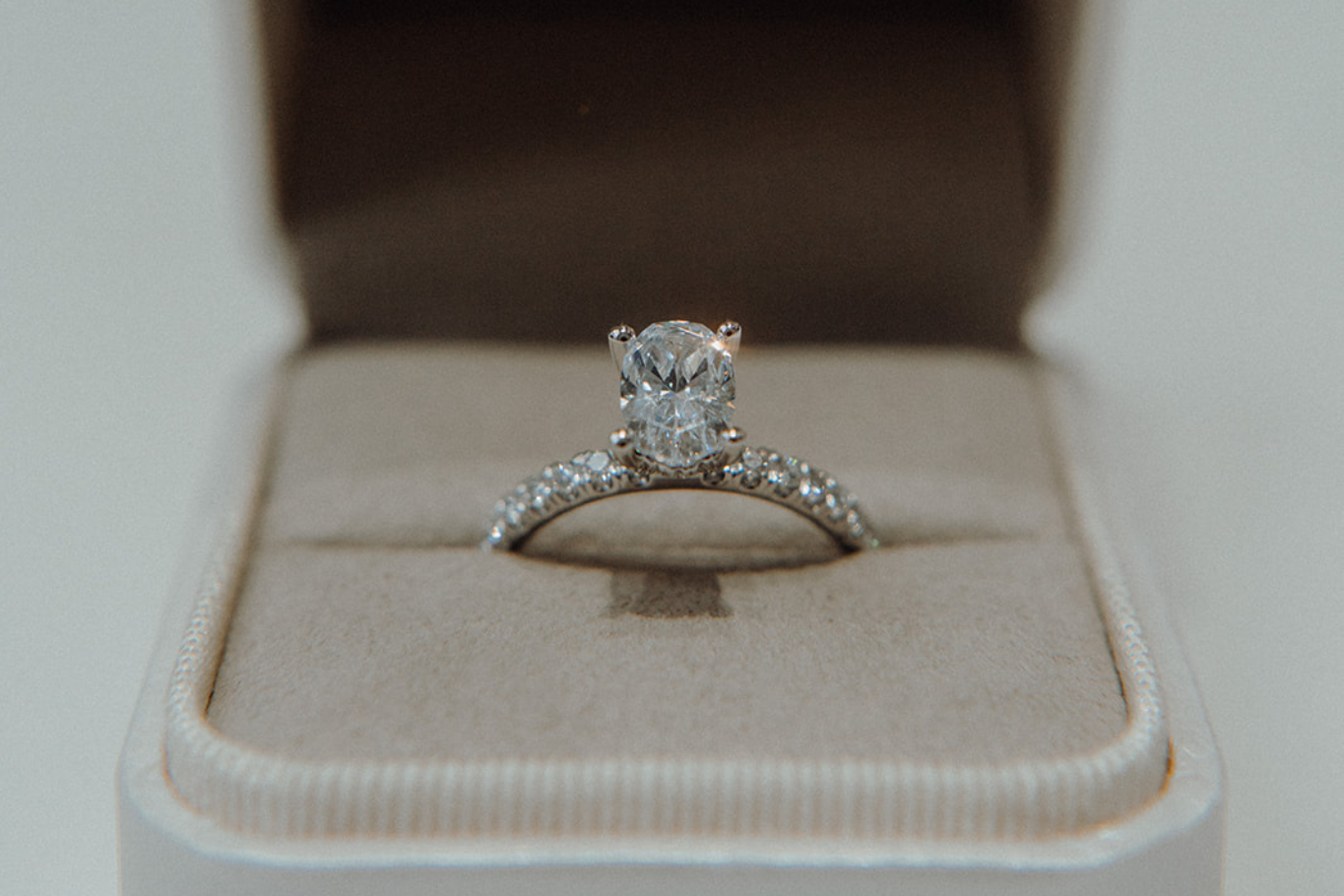Your engagement ring and wedding band are an everlasting symbol of your commitment and love. Choosing a precious metal, a naturally-occurring metallic element that is durable and resistant to corrosion, is essential in such a piece of jewelry that will be worn daily. Today we will begin to look at the choice between two white-toned precious metals: white gold vs platinum. It’s a tough call, especially when there’s little price difference these days, so let’s dive in!
What is White Gold?
All gold begins as yellow gold with its intense yellow color, which is then alloyed with other white toned metals to soften the yellow hue. The gold is then plated with rhodium, another precious metal, to create its final state of bright white sheen.
What is Platinum?
Platinum is a rare, precious metal that is used in jewelry, automobile, chemical and electric industries. It is one of the least reactive metals, making it resistant to corrosion, and it’s more ductile, which makes it perfect for jewelry making.
White Gold vs Platinum:
Color — White gold is a little warmer toned due to its natural color, whereas platinum is a cooler, silver-grey hue.
Hypoallergenic — White gold is alloyed with other white toned metals in order to produce its white appearance, so if you have sensitivity to metals, it may be best to go with platinum. Platinum is generally 95% pure and alloyed with either cobalt or palladium — both of which are naturally hypoallergenic.
Durability — Due to its alloys and rhodium plating, white gold is the strongest of the gold family, and it’s harder than platinum and difficult to scratch. If white gold is exposed to a harsh lifestyle, it can wear down and lose metal over time. Platinum is more dense and malleable than white gold, which allows it to more firmly hold diamonds and gemstones. Platinum doesn’t have a “metal memory,” so if it does bend, its malleability is also easily reparable.
Long Term Care — White gold needs to be maintained by occasionally replating the ring with rhodium. It’s a standard process where the ring is buffed and polished before replating, and it makes your ring look as good as new! Platinum doesn’t scratch in the sense of losing particles, but instead develops little bumps and ridges. This surface ridging is sometimes called “the patina of age,” which shows a piece is well-loved and gives it an heirloom feel.
Design Details — Because of platinum’s strength, density and malleability, intricate metallic details such as engraving or embellishing will look more precise and hold up more definitively over time.
Feel — The density of platinum provides a luxurious feel since the weight is heavier than white gold whereas some people prefer the “wearability” of white gold as an everyday, comfort feel.
The Verdict:
White gold and platinum are both great options for engagement rings due to the structural integrity they both provide in a ring setting. The ultimate decision comes down to personal preference, and the expert sales associates at Colonial Jewelers will be able to assist you in selecting the metal that is right for your needs. Visit our store in downtown Frederick to discover your perfect ring that fits your style and budget!
